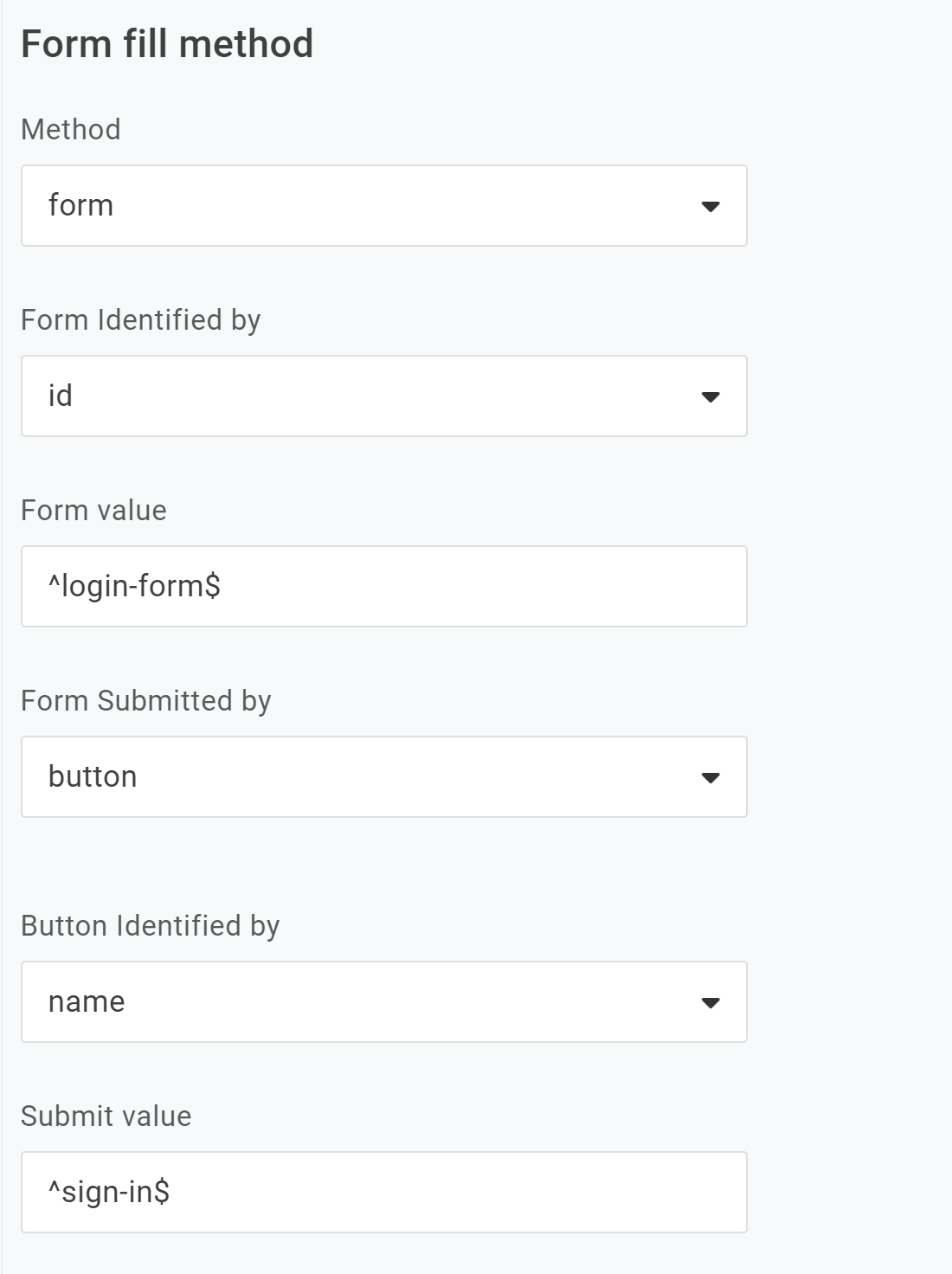If a private application is not available in our app catalog and attempts to add it with the OneLogin browser extension and other custom connectors have not been successful, it may be possible to build your own custom connector in Applications > Custom Connectors.
Prerequisites
This is an advanced connector type that requires experienced configuration. Before building a custom connector, please verify that the app isn't already available to add from the catalog, then attempt to use the appropriate custom connector for your app type below:
Configuration
|
Login url
|
This is the URL that the user is directed to when selecting an app in the user portal.
|
These values must be in a regular expression format. Start your expressions with ^ and end them with $, and always be sure to test your regex.
|
Trigger url
|
This is the URL that the browser extension looks for before it fills in the user's credentials. Make sure the Trigger URL value matches the entire string.
|
|
Trigger domain
|
This is the URL that the browser extension matches to verify this is a login that the user has saved. A blue bar appears at the top of this page asking users to form-fill saved credentials for this domain.
|
|
Method
|
The login method you should select depends on the markup of the login form. Most forms contain plain HTML that OneLogin can easily navigate, making form a straightforward choice.
Other login pages may be more complex and include extensive Javascript, which can make it impossible for the extension to fill in the credentials. In these situations, you can choose script to hand-write a script to interact with the login page.
|
|
Form Identified by
|
Select the attribute OneLogin should use to identify the relevant form on the page.
|
|
Form value
|
Enter the value that matches the attribute selected for Form Identified by in the form of a regular expression.
|
|
Form Submitted by
|
Once the user credentials have been filled in, the login is posted to the server. This is typically done by a button, but some login forms may instead call a Javascript function that needs to process the values before posting them to the server. In these cases, you can select function to provide a Javascript snippet that emulates clicking the button.
|
|
Button Identified by
|
Select the attribute OneLogin should use to identify the correct button for submitting the login form.
|
|
Submit value
|
Enter the value that matches the attribute selected for Button Identified by in the form of a regular expression.
|

Login URL
|
Login url
|
This is the URL that the user is directed to when selecting an app in the user portal.
|
Basic auth URL
|
Basic auth url
|
Enter the authentication URL for the basic auth method.
|
OpenID Connect Authentication
OpenID Connect
|
Redirect URI
|
Enter the Redirect URI that your app uses as a callback endpoint.
|
|
Post Logout Redirect URI
|
Enter URI to redirect users to after logging out by the OIDC.
|
|
Signing Algorithm
|
This is the signing algorithm used by the connector.
|
Login URL
|
Login url
|
This is the URL that the user is directed to when selecting an app in the user portal.
|
Parameters
Once a form-based or basic configuration has been saved, an additional Parameters page appears. A connector can have as many parameters as needed. Typically for a forms-based connector, username and password are the only requirements, but some applications may also require a subdomain, account number, or other fields.
|
User interface label
|
Enter the parameter's name as displayed to users.
|
|
Short name
|
Enter the metadata identifier for the parameter's field.
|
|
Tip
|
Enter any help text to display for users.
|
|
Flags
|
|
Required
|
Requires users to enter a value for this field
|
|
Visible
|
Makes this field visible to users
|
|
User editable
|
Allows users to edit this field.
|
|
Search
|
Makes the field searchable
|
|
Optional
|
Makes the field optional
|
|
Populate default value
|
Auto-populates the field with an established default value
|
|
|
Type
|
Select the format or field type for the parameter.
|
|
At Level
|
Determine if the field is applied at the User or App level.
|
|
Format
|
Ensure that any text enters matches the required format.
|
|
Default User Attribute Mapping
|
Choose a user attribute to map the parameter to by default.
|
|
Default user attribute transformation
|
Select how to send multiple parameters as a string.
|
|
Name in HTML form
|
Enter the name of the form element in the sign-in page's HTML.
|
|
Test value
|
Enter a value you can use to test the connector without an associated application.
|
Note: If an admin alters a parameter after an app has been added to the connector, the parameter must be deleted and reinstalled.
|